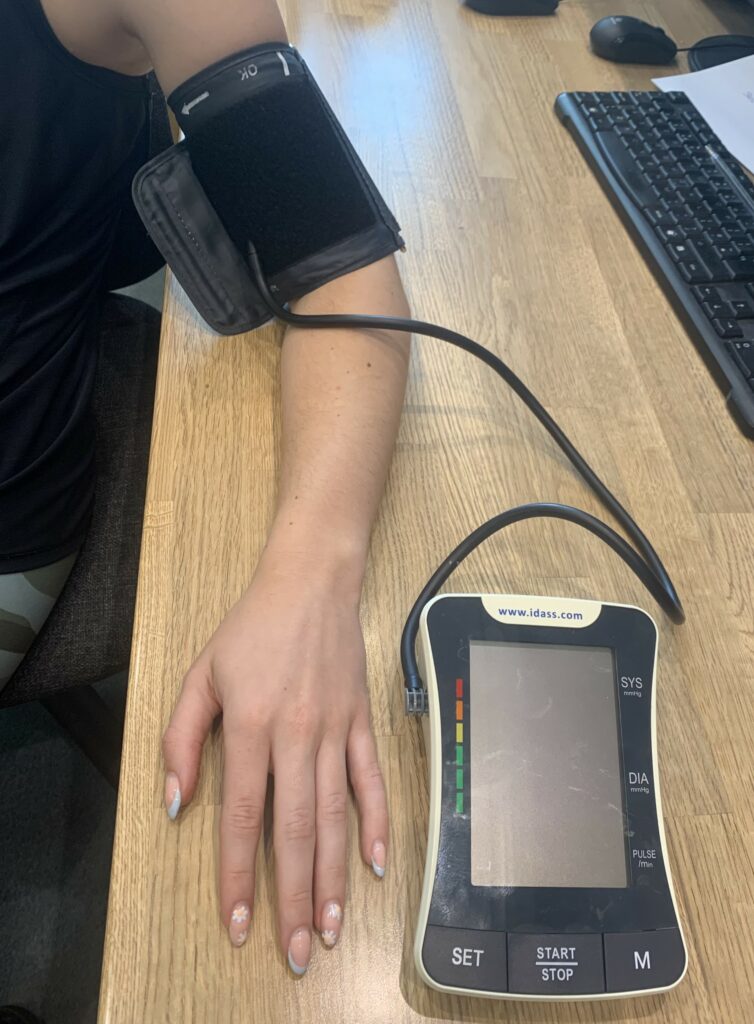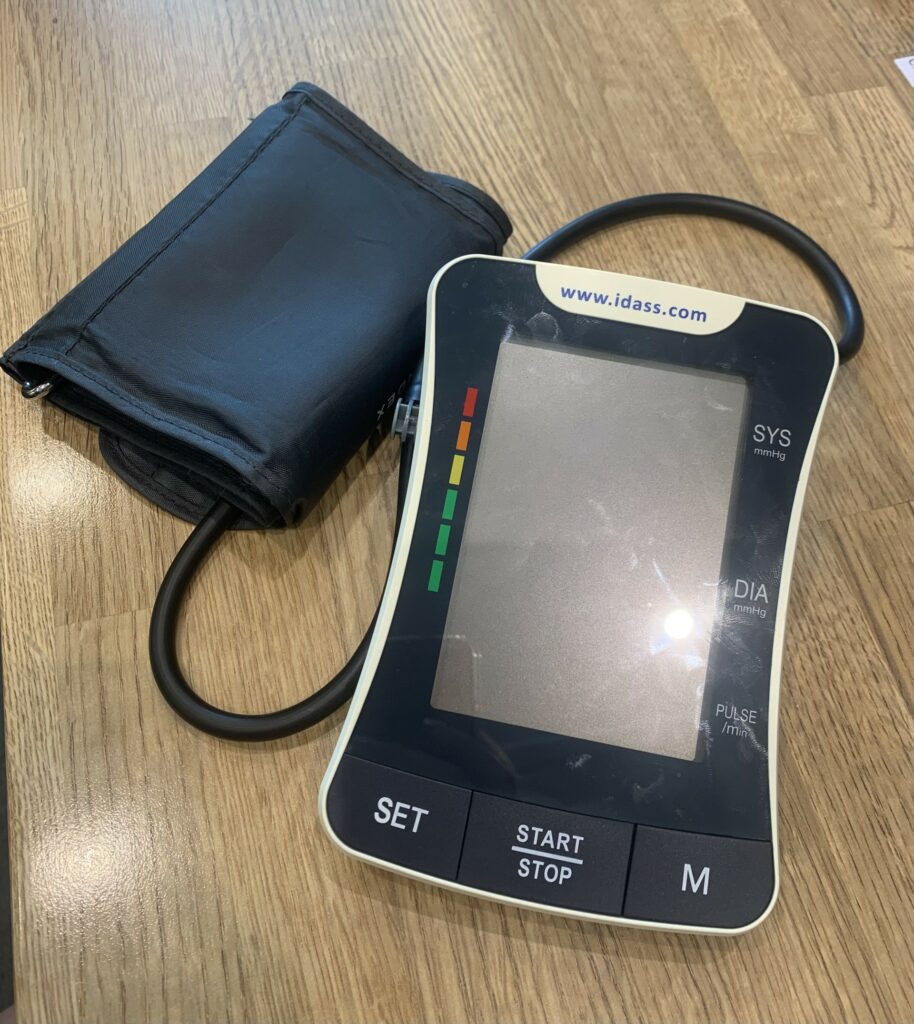Blood pressure is the measure of force that your heart uses to pump blood around your body.
Blood pressure readings are given as two figures; systolic pressure, which is the pressure when your heart contracts and pumps blood out through the arteries around your body, and diastolic pressure, which is the pressure in the arteries when your heart relaxes between beats. It is measured in millimetres of mercury (mmHg). When you take a blood pressure reading the systolic pressure is the first number taken and the diastolic pressure is the second number.
Blood pressure readings…
- Optimum blood pressure is considered to be between 90/60mmHg and 120/80mmHg
- High blood pressure is considered to be 140/90mmHg or higher
- Low blood pressure is considered to be 90/60mmHg or lower

Left untreated, high blood pressure can increase your risk of developing a number of serious long-term health conditions, such as coronary heart disease and kidney disease.
Low blood pressure is less common. Some medicines can cause low blood pressure as a side effect. It can also be caused by a number of underlying conditions, including heart failure and dehydration.
Blood pressure is measured using a machine called a sphygmomanometer (“sfig” + “moh” + “muh” + “nom” + “i” + “tuh”). There are a few different variations of these – manual using mercury, manual using aneroid gauge and digital. All of them have a pressure gauge attached to a cuff that goes around your upper arm. The cuff will collapse and then release the artery in a controlled manner and then the pressure will be measured and give your reading.
The mercury sphygmomanometer measures the height of a mercury column and is often thought as being the most accurate so is used in clinical tests. Manual ones are used with a stethoscope where, as the cuff deflates, the first sound you will hear through the stethoscope is the systolic blood pressure. When this noise goes away this indicates the diastolic blood pressure. The digital versions use electronic calculations so may not be quite as accurate as the manual as requires the client to not be moving during the test, although they are more user friendly and are widely used.

Your blood pressure reading can be affected by a number of factors including recent physical activity, your body position whilst the reading is being taken (you must be sitting, relaxed, with your legs uncrossed and not talking), your emotional state, diet, and recent sleep.
Blood pressure can vary throughout the day and will generally be a little higher in the morning. Readings tend to be slightly lower at home due to the anticipation or anxiousness of a more clinical and medical set up. It is advised to take 2-3 readings each time to ensure accuracy.
Physical activity can help to lower your blood pressure and make your heart stronger so that it can pump the blood around your body more effectively. Dietary and lifestyle changes can also help with this such as increasing exercise and lowering salt and alcohol intake. However it is always recommended that you see a doctor if your blood pressure is not within the normal range as you may need medication to help with managing this.

